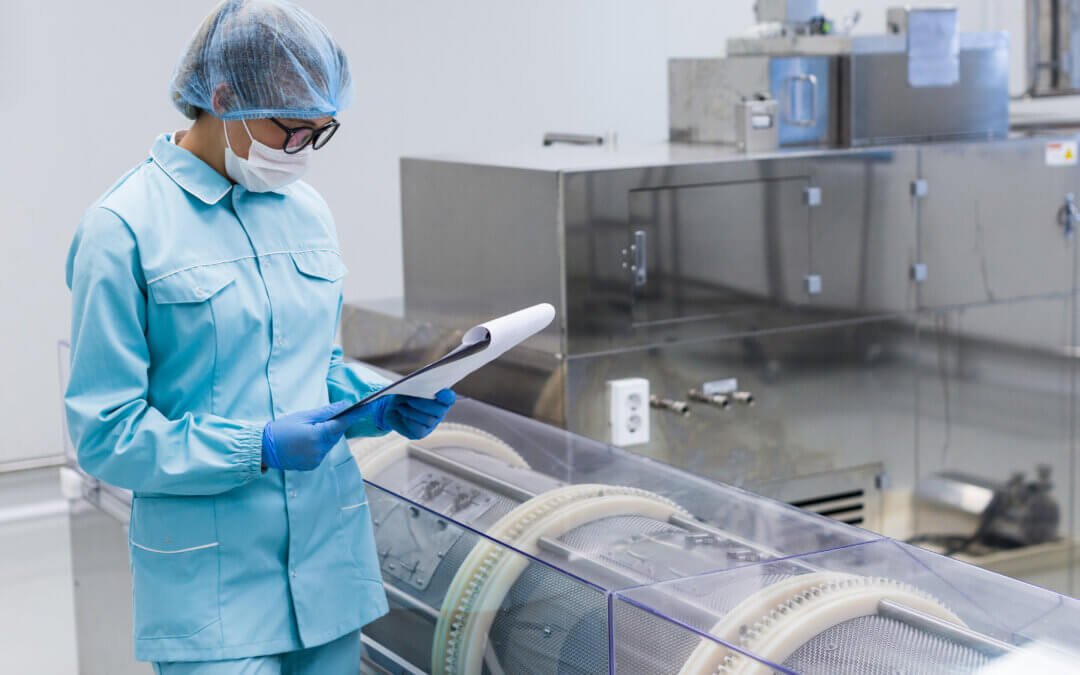A simple guide to understanding how new-age technology is improving the sterilization of surgical instruments.
The sterilization of surgical instruments is one of the most critical processes in healthcare. Every hospital, clinic, and diagnostic centre depends on safe instruments to prevent infections and protect patients. As surgeries become more advanced and the demand for precision grows, sterilization methods also need to evolve.
This is where technology has made a major difference. Modern irradiation technology has changed how medical sterilization works, offering a cleaner, safer, and more reliable method compared to older techniques. Today, medical irradiation is seen as one of the most dependable ways to ensure complete sterilization without damaging the instrument.
What Is the Sterilization of Surgical Instruments?
Traditionally, hospitals used methods like autoclaving (steam), heat-based systems, boiling water, or chemical disinfectants. While these methods are effective to an extent, they come with limitations. Heat can damage sensitive materials. Chemicals may leave residues. And not all microorganisms are fully eliminated.
Because of rising safety requirements, healthcare facilities now prefer methods that are precise, reproducible, and fully controlled. This shift is the reason medical irradiation is becoming a central part of modern medical sterilization. It ensures high levels of sterility without affecting the quality or performance of the instrument.
Introduction to Irradiation Technology
Irradiation technology uses controlled radiation to sterilize products. It is widely supported by global bodies such as the International Atomic Energy Agency (IAEA), which sets standards for safe and consistent use.
In simple terms, irradiation works at the physical, chemical, and biological levels. When instruments are exposed to gamma rays, the energy breaks down the DNA of microorganisms. This stops them from multiplying, making the product safe for use.
A major advantage is safety. Irradiated products do not become radioactive and do not carry any harmful residue. This makes irradiation one of the cleanest sterilization methods available today.
The Medical Irradiation Process Explained
Most medical irradiation is done using gamma rays produced by cobalt-60, a reliable and stable radiation source.
How the process works
- Instruments are packed and sealed.
- The sealed batches are placed inside a shielded chamber.
- They pass around cobalt-60 sources in a controlled path.
- The energy dose is measured and adjusted to meet sterilization requirements.
- The products come out fully sterilized and ready for distribution.
Important terms made simple
- Absorbed Dose: The amount of radiation energy absorbed by the product.
- Gray (Gy): The unit used to measure absorbed dose.
- Curie/Becquerel: Units used to measure radioactivity of cobalt-60.
- Half-life: Time it takes for the source’s activity to reduce by half.
These measurements help keep the sterilization process predictable, safe, and repeatable.
Why Medical Irradiation Is a Game Changer
- Reliable sterilization every time
Medical irradiation provides consistent results, making it ideal for the sterilization of surgical instruments.
- Large batch processing
Gamma plants can sterilize thousands of units in one cycle, improving efficiency.
- No damage to materials
Sensitive products like plastics, rubbers, and composites stay intact, unlike with heat-based methods.
- Works for many medical items
This includes:
- Syringes and needles
- Catheters
- Surgical blades
- Dialyzer kits
- Gloves
- Ointments
- Bottles and caps
- Medical packaging
It covers almost the entire range of healthcare products used daily.
Technological Growth Driving the Medical Sterilization Industry
The use of irradiation in medicine began in the 1950s. Over time, the technology grew more advanced, leading to automated plants, smart controls, and better monitoring systems.
Today, gamma irradiation is used not only for medical sterilization but also for:
- Cancer treatment
- Food safety
- Preservation of sensitive products
As safety standards rise across the world, demand for irradiation technology is growing quickly. Better regulations, improved research, and stronger quality checks continue to push the industry forward.
Major Advantages of Irradiation Technology
- Effective for cancer treatment with short exposure cycles
- Safe for products and the environment
- Low chemical usage, ensuring clean outcomes
- Flexible applications, from medical to food to industrial uses
Case Study: Items Irradiated and Their Parameters
Based on standard irradiation practices, the following items are commonly processed:
| Medical Devices | Syringes, catheters, dialyzer kits | 25–30 kGy | ~27 kGy | Ensures total microbial elimination |
| Surgical Items | Blades, gloves | 25–30 kGy | ~27 kGy | Maintains strength and performance |
| Pharma Items | Ointments, bottle caps | 25–30 kGy | ~27 kGy | Prevents contamination without affecting quality |
Dose control ensures safe, efficient, and validated sterilization every time.
Future Trends: What’s Next in Medical Sterilization?
The next decade will bring even more advanced technologies:
- AI-based monitoring
- Real-time dose tracking
- Fully automated gamma irradiation plants
- Stricter global and Indian regulations
- More industries adopting irradiation
Symec Engineers continues to follow these developments and remains ready to support the sector with modern, high-performance solutions.
The Symec Commitment
At Symec Engineers, we have spent years working at the frontlines of irradiation technology—designing, building, and supporting gamma irradiation plants across India. Our work began with a vision to make medical sterilization safer, scalable, and more dependable for hospitals, pharmaceutical companies, and device manufacturers.
Over time, we have helped advance facilities that support medical sterilization, cancer treatment, and industrial applications, all while prioritising safety, compliance, and environmental responsibility. Every project we take up reflects our belief in precision, high standards, and long-term reliability.
As technology continues to grow, we remain committed to pushing the boundaries of irradiation technology, developing stronger systems, and supporting the industry with trusted expertise.
Our goal is simple: to make sterilization smarter, safer, and ready for the future of healthcare.

